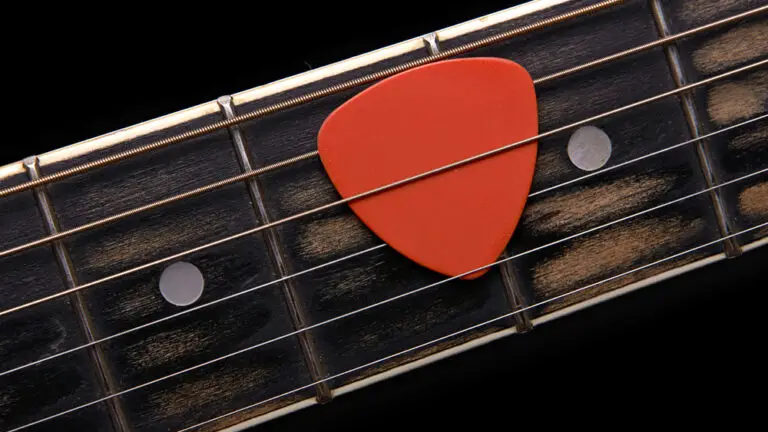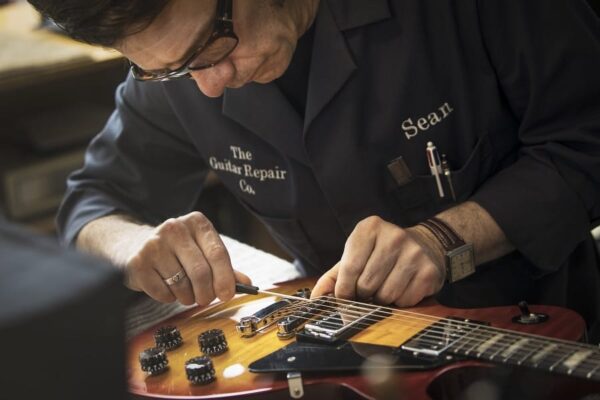Table of Contents
If you are thinking of learning how to play the guitar, you may be wondering how many strings does a guitar have? Well, the truth is that there are guitars of different shapes and sizes and with many different string combinations.
In this guide, we will walk you through the different guitar types and the number of strings they have. Stay tuned to learn more about this.
6 String guitar
To start, you should understand that the typical guitar has 6 strings, whether it is acoustic, electric, or even classic. On top of that, most guitar players usually stick to 6-string guitars because there are very few advantages to using a 7 or even 8-string guitar. It is also difficult to transition from playing a 6-string instrument to a 7 or even 8-string.
How many strings does an electric guitar have?
The typical electric guitar has 6 strings that are tuned as follows:
- E
- A
- D
- G
- B
- E
While this is the most common type of electric guitar, there are other models that are equipped with 7, 8, 9 and even 10 strings. Let’s look at those in more detail.
7-String guitars
While 7-string guitars are one of the most common variations and additions, there are only a few guitarists that actually use them. It is typically associated with metal because the extra string allows players to sound heavier and give the guitar a fuller sound when playing chords. The traditional 7-string guitar has an added B lower string on top of the E like so:
- B
- E
- A
- D
- G
- B
- E
But a 7-string guitar is not only used to play metal, in fact, but several other musical genres can also take advantage of seven-string guitars due to their versatility and ability to create different voicings for chords. This is the case of jazz guitarist John Pizzarelli, which like his father, Bucky Pizzarelli has been using 7-string guitar despite being a jazz musician.
What advantages of using a seven-string guitar
- Create different chord voicings
- Increase the sound range of your instrument
- It gives you more tonal options
- Increases your creative ability
- Possibility of creating different tunings
8-String guitars
Yes, 8-strings guitars are uncommon, but there are plenty of metal guitar players that choose to play an 8-string guitar instead of 7 and 6-string variants. 8 string guitars give you even more tonal and sound range options while still being able to play anything you hear on a traditional 6 string guitar.
The main problem with a guitar with 8 or more strings is that because of the added number of strings, the neck of the guitar has to be chunkier, and this can be challenging for some players to use the instrument. Especially if you have smaller hands and have a hard playing a 6 string guitar.
8-String guitars usually have the lower B string, just like a 7-string, and another string tuned to F#, like this:
- F#
- B
- E
- A
- D
- G
- B
- E
9-String guitars
9 strings are extremely uncommon, but they do exist. While it is extremely unconventional, and it takes the average guitar player a lot of time to learn how to use this variation of the classic six-string guitar, there are some players who do use 9-string guitars. The 9-string guitar gives you a complete full wide range of tonal and sound possibilities.
Do 10-string guitars exist?
Yes, they do exist, but this is probably one of the rarest string combinations in guitars because the neck is so wide, and it becomes difficult for guitar players to master this instrument that while it resembles a normal guitar, it is something completely unique.
Guitar string FAQ
How many strings does a classic guitar have?
The typical Spanish or classic guitar has just 6 strings, and while there are a few models of classic guitars with 7 strings and more, they are often custom-built by luthiers.
How many strings does an acoustic guitar have?
The typical acoustic guitar has just 6 strings, but some models have 7 strings. However, it is extremely uncommon for acoustic guitars to have more than 6 strings.
How many strings does a bass guitar have?
Bass guitars usually have 4 strings, but there are plenty of different variations. Bass players sometimes have a guitar background, which means they learn how to play a 6-string guitar and then transition to bass. For this reason, it is common to see 5-string and even 6-string basses, which have the same tuning as a 6-string guitar.
How many strings does a ukulele have?
Much like bass guitars ukuleles have 4 strings, but their tuning is completely different from basses and guitars. Despite this, there are a few ukulele models that have more than 4 strings.

I have been playing guitar for the past 15 years, and my knowledge and passion for guitars prompted me to start Guitaresque to share my knowledge, tips, and tricks with other guitar players. The sole purpose of this website is to help and inspire guitar players worldwide, to improve their playing and their love for guitars.










